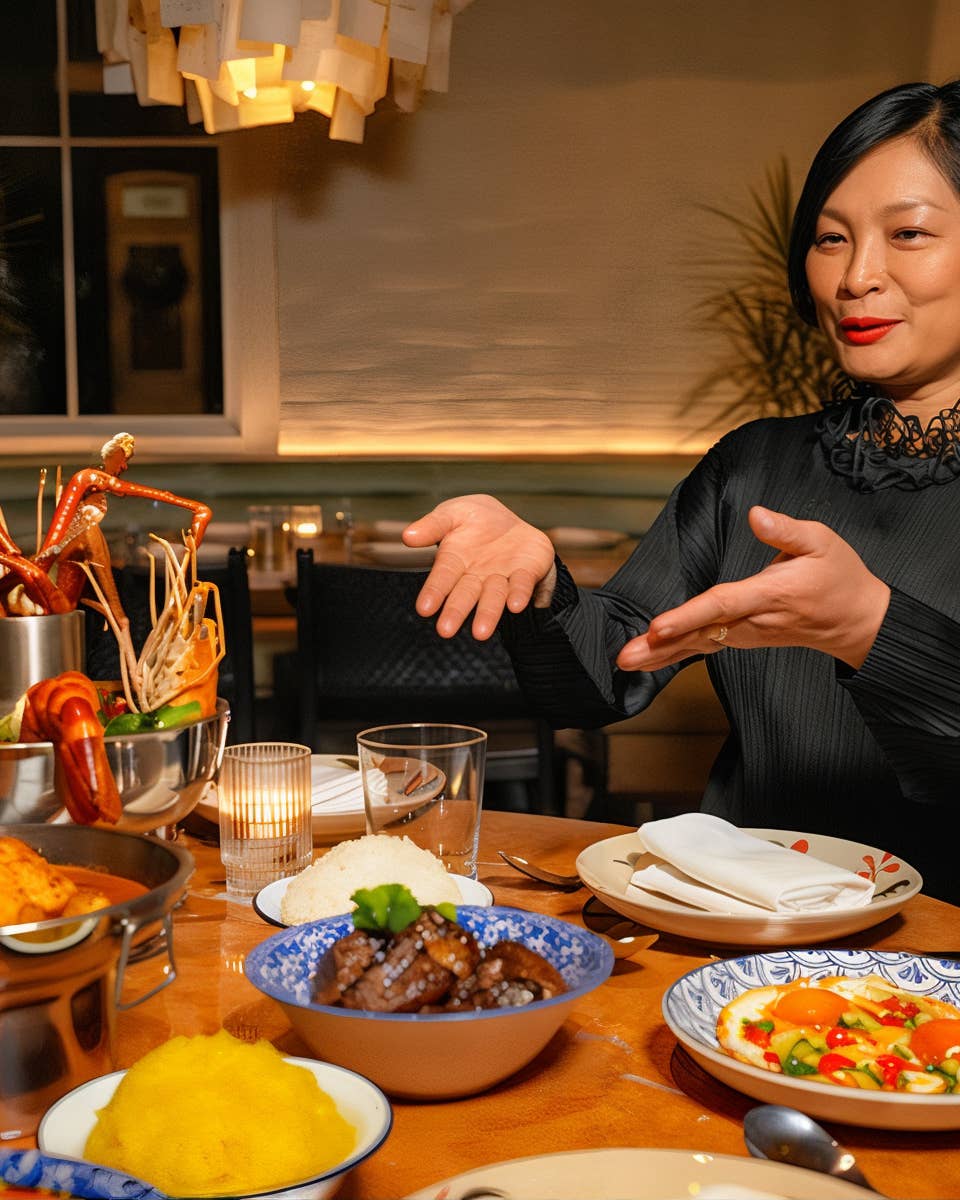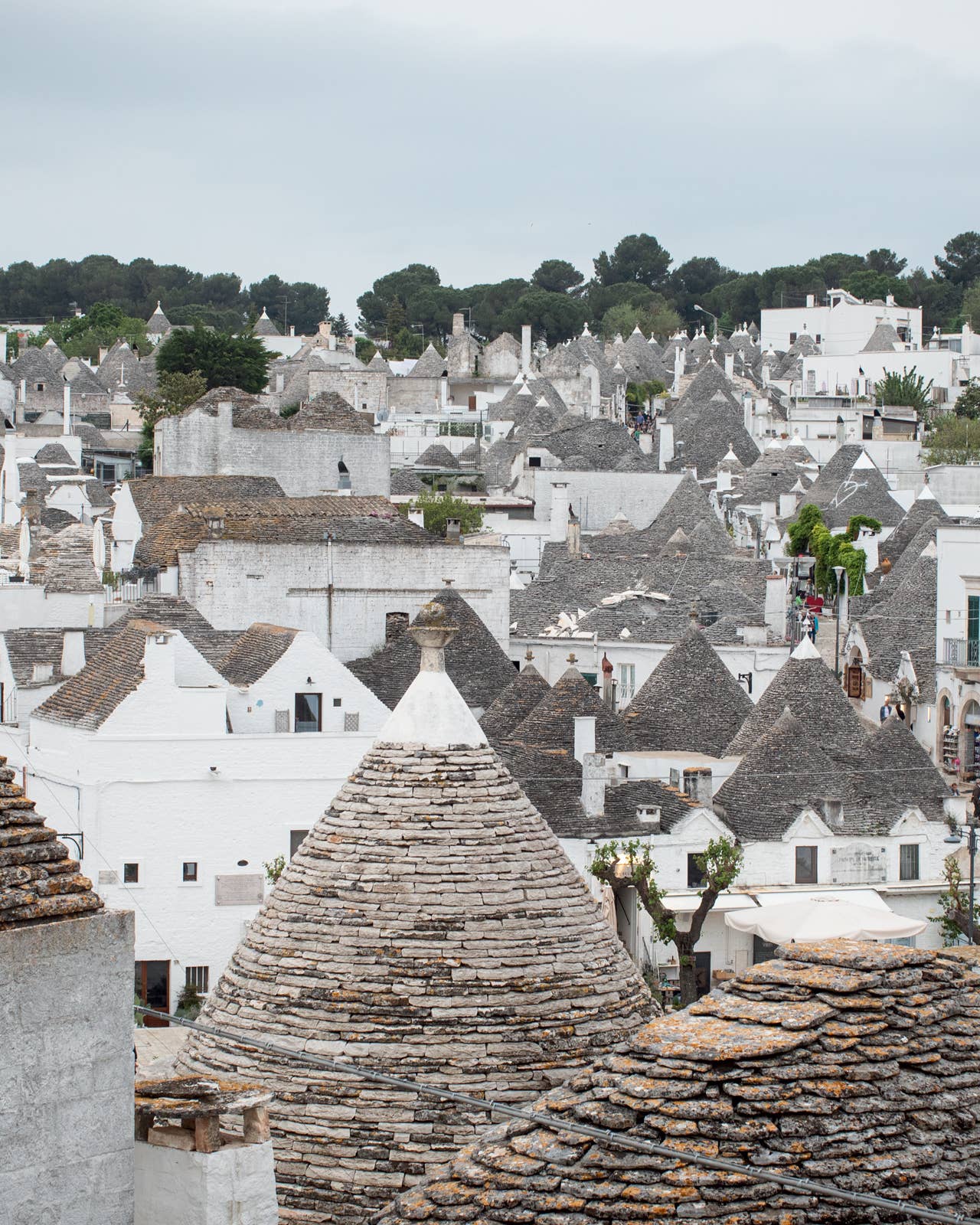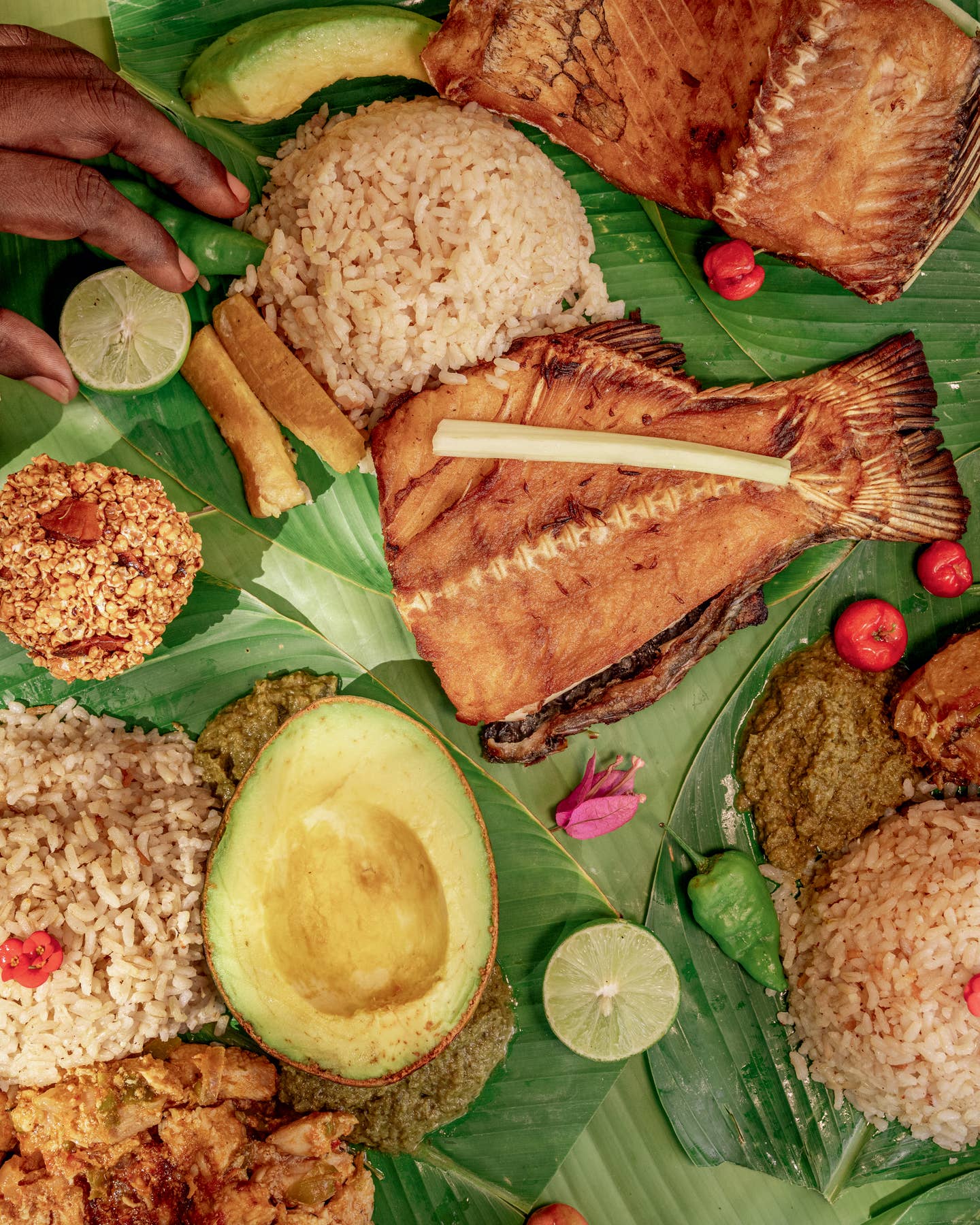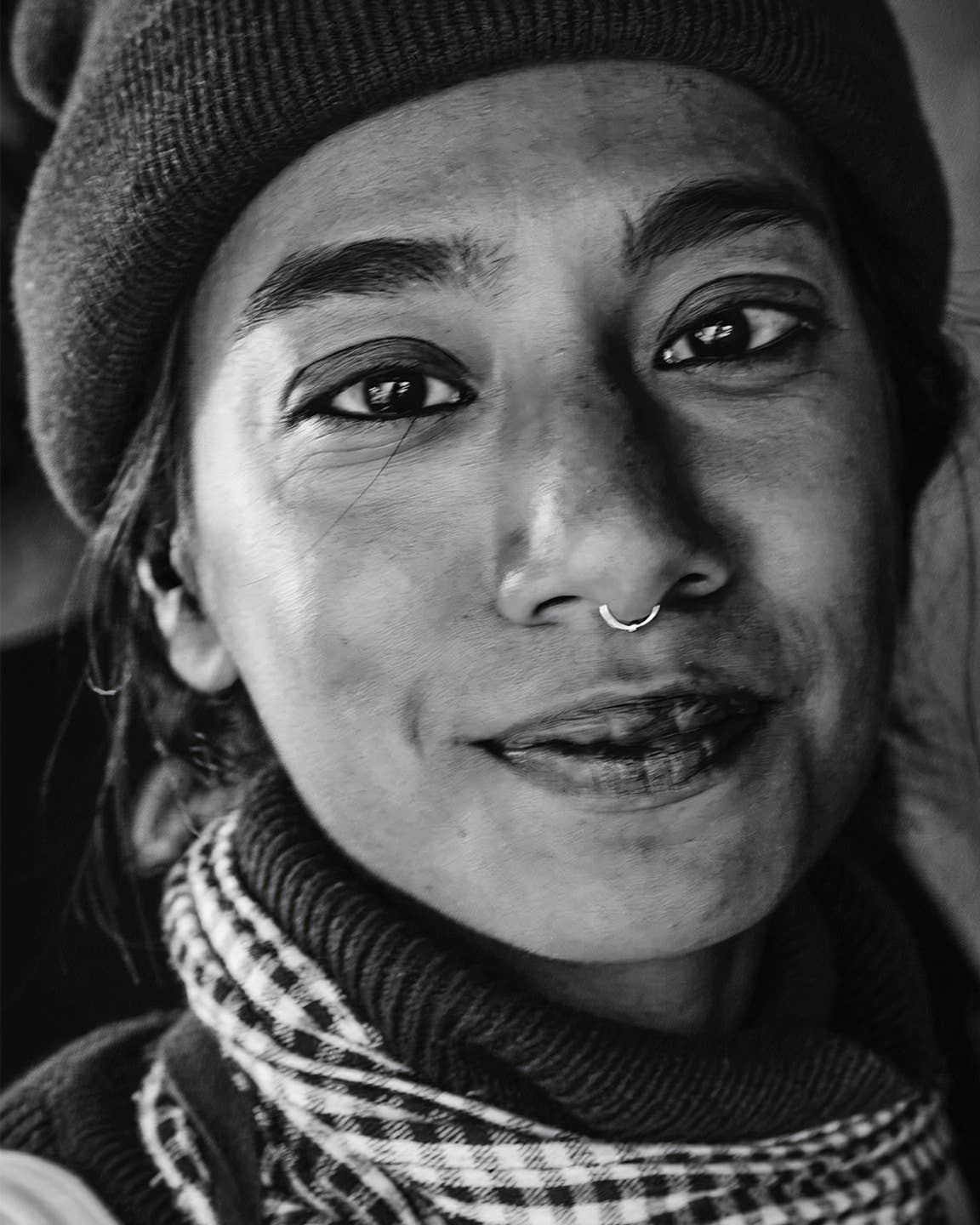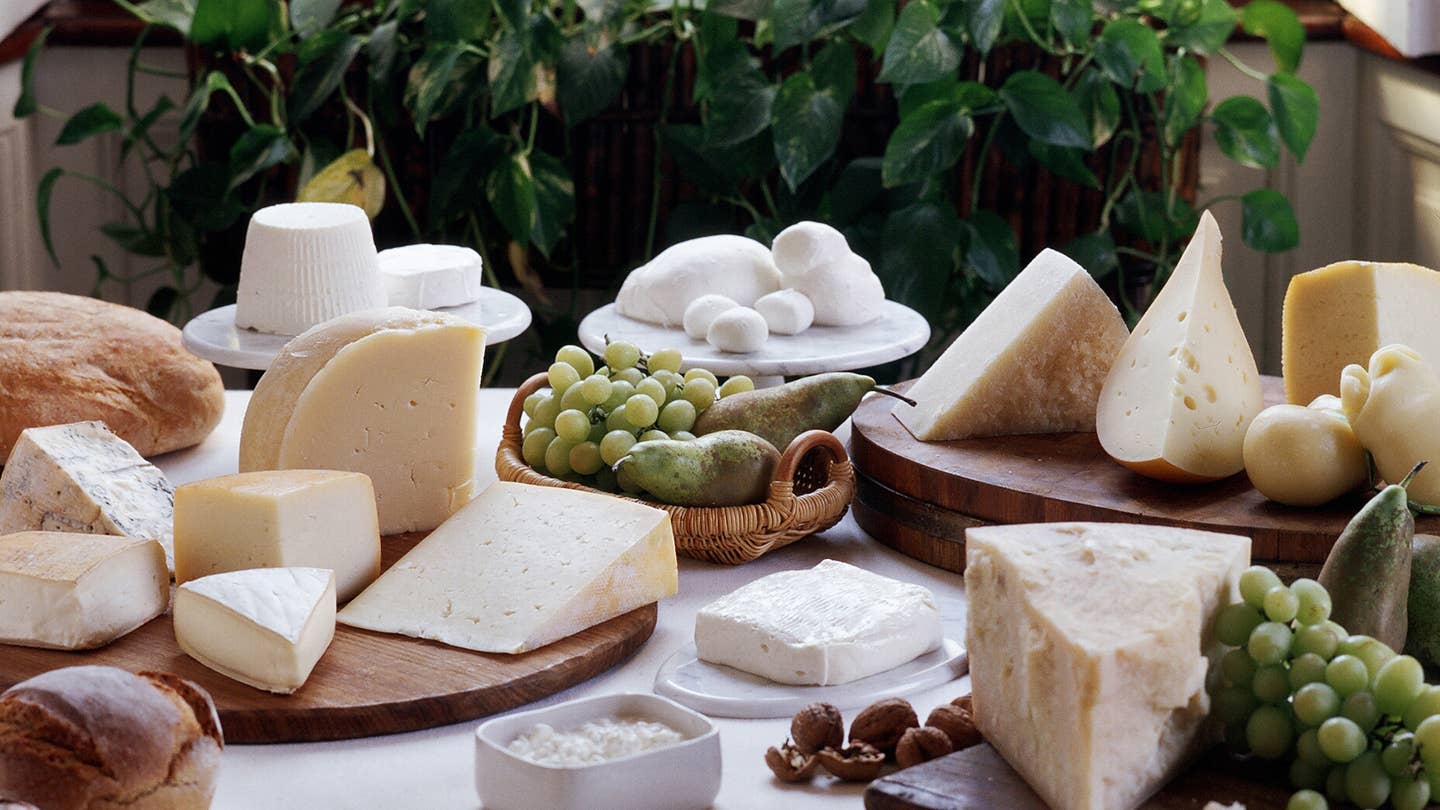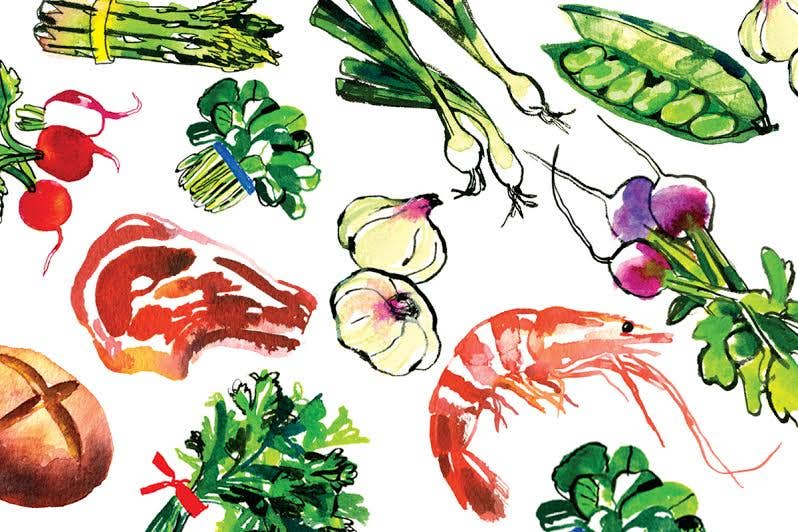
Auvergne: In the Heart of France
There's no menu at Au P'tit Bistro, a smoke-filled, bare-bones cafe in the French village of Saint-Martin-Valmeroux—at least not on Mondays. In fact, there's no ordering at all, the presumption being that any person passing through this hamlet in mountainous, rural central France should consider himself lucky to have found a place that's serving food at all on this customary day off for restaurateurs. Here, it was the daily special or nothing. Moments after I took my seat, a small carafe of red wine, a basket of sliced baguette, and a cold appetizer of white asparagus in a vinaigrette appeared before me unbidden. On entering the restaurant, I'd received a scolding look from the proprietor, a thin woman who wore reading glasses on a silver chain and had thrust her chin in the direction of a clock on the wall. I'd arrived for lunch at 1:45 in the afternoon, in a part of the country where they slap shut the sidewalk menu boards at 2:00 p.m. sharp. Only begging and pleading had earned me a seat at one of the tables occupied by farm workers who were already finishing their post-lunch Gauloises.
Here in the Auvergne, a rugged, 10,000-square-mile region in the geographic midpoint of France that is one of the least urbanized areas of the country, people don't cling to some hoary past as much as they just do things by the book, the way they've always been done. Nothing brought that home to me more than the main course I was served at that cafe: a classic local pairing of flavorful saucisses d'auvergne (country-style fresh pork sausages) that had been simmered in wine and served with delicate, bacon-flecked green Puy lentils harvested in the Haute-Loire, one of the four administrative districts that make up the Auvergne. The main dish was followed by a selection of local cheeses—sharp salers and cantal, nutty saint-nectaire, luscious bleu d'auvergne—served from a platter that made the rounds from table to table. In its rustic, almost obstinate simplicity, the meal honored two of the touchstones of the Auvergne's cooking—pork and dairy products—and, more than that, perfectly captured what is the most dear to me about France as a whole: the notion that it is not only okay but downright righteous to eat and drink richly every day.
For all the frills of their haute cuisine, the French harbor a deep affection for the foods of their heartland: ingredients and dishes that lay bare their rural origins. That's one of the things that struck me as I got to know the Auvergne, an often overlooked land of remote farm villages tucked amid the extinct volcanoes of the Massif Central mountain range, during a weeklong trip there at the end of November last year. I'd lived in France during my 20s and, over the years, had traveled around most of the country's major regions, where I reveled in the local specialties—oysters in the Aquitaine, choucroute in Alsace-Lorraine, bouillabaisse in Provence, and so on. But when I sat down to meals in the Auvergne last fall, including that memorable lunch at Au P'tit Bistro, I tasted wonderful food that felt less like a specific regional cuisine than a pure, distilled culinary embodiment of Frenchness.
Yes, I encountered local specialties like pounti, a meat loaf made with ground pork belly, prunes, and herbs; aligot, a garlicky whipped potato-and-cheese dish; and truffade, a more rustic version of aligot that's sometimes made with bacon. But there were also nourishing potees, or stews, of pork ribs and cabbage that were just like ones served in convivial brasseries all over France. There were the delicious handmade dry-cured hams and sausages that appear on countless charcuterie plates in Paris bistros (see The Auvergnats in Paris). And there were cheeses—the region boasts no fewer than five A.O.C.-designated ones (see Cheeses of the Auvergne)--that have earned fame all over France and beyond. Most tellingly, there were dishes like the sausages and lentils I ate at Au P'tit Bistro: a plain but elegantly conceived marriage of foods that reflected a respect for time-honored cooking techniques that use good products close at hand. Eating the Auvergne's hearty, unpretentious cuisine, I kept saying to myself, This is what France tastes like.
Indeed, more than a few of my French friends have described the Auvergne as la France profonde, "deepest France", a place where the country's sacrosanct values, represented by a closeness to the land and the pleasures of simple cooking, are thought to be enshrined. The phrase kept ringing in my ears as I ventured into the region last November. After a three-and-a-half-hour train ride due south from Paris to Clermont-Ferrand, the unprepossessing industrial hub of 140,000 people that is the only city of any size in the Auvergne, I drove south and west along increasingly narrow and serpentine roads—the region is largely unserved by major motorways—into Cantal, the most mountainous and arguably the most rural of the Auvergne's districts. Here and there, in a stark landscape of bare trees, snow-dusted mountaintops, and upland grazing pastures, the turret of a castle would ease into view—vestiges of a feudal past that reaches back to the Arverni, the Gallic people who originally inhabited this land and gave the region its name.
Mostly, though, I saw small dairy, hog, and cattle farms, which are the cradle of the Auvergne's cuisine. Before my trip, I'd met a woman named Sylvie Favat, who grew up in Cantal and had provided me with introductions to a handful of farmers she knew in the region. So, early in the morning after I arrived in Salers, the quiet medieval village where I'd decided to stay for a few nights, I followed Favat's directions in the frigid predawn darkness to a small dairy farm run by the Benech family.
The farm comprises a cluster of stone and cement buildings located at the end of an unpaved, single-lane road that had been etched out of a steep valley wall. When I pulled up in front of the farmhouse, I could see through the front window a hale-looking old man in a wool cap sitting alone at a kitchen table in a halo of light cast by a ceiling lamp. A short woman wearing a rumpled cotton housedress and an apron came outside, pushed open the wood courtyard gate, and beckoned me to come in. She introduced herself as Lucienne Benech and presented me to her husband, Fernand, who was finishing his morning meal, a traditional dairyman's breakfast of bread soaked in warm cheese curd. "He has the same thing every morning," Lucienne said, as Fernand finished up and invited me to accompany him on his morning rounds to feed the cows.
Fernand and Lucienne grew up in Cantal, a few villages apart, and have been married for half a century, he told me as we walked up a muddy lane past the milking sheds under a low, flint-colored sky. As he worked, Fernand talked about the old days: how the men of his father's generation emigrated north to work as coal merchants, how Lucienne used to accompany her own father, also a cheese maker, to market once a week, and so on.
A few hours later, I was seated at a dining table in the farmhouse for the midday meal with Lucienne and Fernand; their son, Gilles, who makes cantal and salers cheeses by hand in a small building next to the house; Gilles's wife, Chantal; and their teenage son, Julien. In addition to their 50 or so cows, the Benechs have about 30 pigs, from which they make some of the most exquisite dry-cured ham I've tasted: boldly flavored, almost sweet, and possessed of a silky texture I'd previously found only in Italy's finest prosciutto.
The ham, finely sliced, was the centerpiece of the meal, along with some of the farm's sharp, grassy aged cantal and a pounti that Lucienne had made that morning using fresh milk from their cows and pork belly from their hogs. We drank saint-pourçain, a steely white wine made in Allier, in the Auvergne's northern tier, and a red cotes d'auvergne that, Fernand told me, had been aged in a mountainside bunker called a buron. I do not remember ever having had a meal so ideally suited to the cold, damp weather of early winter.
The other farms that Sylvie Favat had pointed me to yielded similar evidence of a continuity between the present and the past. At the Ferme Bruel, in the Cantalian village of St-Illide, I tasted deliciously fatty, slow-cured pork sausage that had been salted and air-dried according to methods that had changed little in a hundred years. At the Ferme Lacombe, nearby, hog and cattle farmers Jean-Paul and Michele Lacombe told me about la mangoune, the annual midwinter slaughter of pigs, a ritual still observed in the Auvergne, during which entire farm families engage in the business of butchering and preserving the meat from their hogs. And at the Ferme de la Roquette, just outside Salers, I was audience to a soliloquy on the nobility and hardiness of the ancient breed of beef cattle that shares that town's (and the cheese's) name. "Salers cattle were born to survive on these steep, pebbly slopes," said Marie-Helene Roquette, a striking, wiry woman in thick coveralls, as she introduced me to a few of her cows, gorgeous animals with russet-colored coats. "Normandie and Charolais cows are a disaster here. This is a beautiful region but a difficult land."
My last day in the Auvergne dawned typically gray and cold. I had a jar of farmstead yogurt for breakfast and set out to explore Salers and its environs. By 11:30 or so, I was chilled to the marrow and hungry. As I'd discovered earlier in Saint-Martin-Valmeroux, finding a place to eat in the villages of the Auvergne during the off-season can be difficult. Therefore, I considered it a second stroke of good luck that I stumbled on La Poterne, a small restaurant, in the old cobblestoned heart of Salers, that was open for business.
It wasn't yet noon when I arrived, and the lunch service hadn't begun. A man I assumed to be the chef and owner, a stout figure dressed in kitchen whites, was standing at the small wooden bar near the entrance, chatting with the town's mail carrier and sipping a pelou, a local aperitif of white wine mixed with a liqueur made from chestnuts (which are cultivated in abundance in the south of the Auvergne). The chef offered me one and invited me to have a seat in the low-ceilinged dining room, at the center of which rose a massive stone chimney with an open hearth that contained a big cast-iron pot. He saw me admiring it and came over to my table. "The chimney and the main part of the house were built in 1789," he said, adding that cooks in the Auvergne often made soups and huge rib roasts in old stone hearths like this on winter nights. "I'm very attached to the history of this place."
He introduced himself as Christian Lacombe (no relation, as it happens, to Jean-Paul and Michele, of the Ferme Lacombe) and explained that he and his wife, Evelyne, the restaurant's co-owner, come from families that go back several generations in the Auvergne. "I will die here," he said cheerfully, before disappearing into the kitchen to prepare lunch for me and the dozen or so other customers who had come in from the chill.
A short while later Evelyne appeared bearing the first course, a velvety chestnut-cream soup, which sent tendrils of warmth through me with every spoonful. The three construction workers seated at the table next to mine were eating the same thing; when they finished their soup, each of them performed a ritual known in rural France as le chabrot, which entails pouring a generous splash of red wine into the empty soup bowl, picking it up, and draining it with a spirited slurp. I followed suit.
Lacombe himself brought out the next course: bourriol, a rustic crepe made from coarse buckwheat flour and folded over crumbled bleu d'auvergne cheese, which melted and suffused the porous surface of the crepe. Then came a hearty truffade, the skillet-cooked potato-and-cheese dish, followed by a pave, or filet, of tender and tasty Salers beef, done rare and served with a simple salad of bibb lettuce dressed lightly with a vinaigrette.
For dessert there were two offerings, and I decided to try both of them. First came a slice of tarte aux myrtilles, a tart made with the intensely sweet variety of blueberry that grows in the Auvergne districts of Cantal and Puy-de-Dome. It arrived with coffee and crunchy, mildly sweet tea biscuits called carres de salers, which, as their name suggests, were baked in town. Then, a quiet finale: a piece of slightly savory, vanilla-tinged cheesecake made with tome de cantal, the fresh curd of cantal cheese. Golden on top and ethereally light within, the tart had an alluringly muted character that struck me as a fitting reflection of the somber landscape that could be seen rising up beyond the town's old stone ramparts.
Keep Reading
Continue to Next Story





